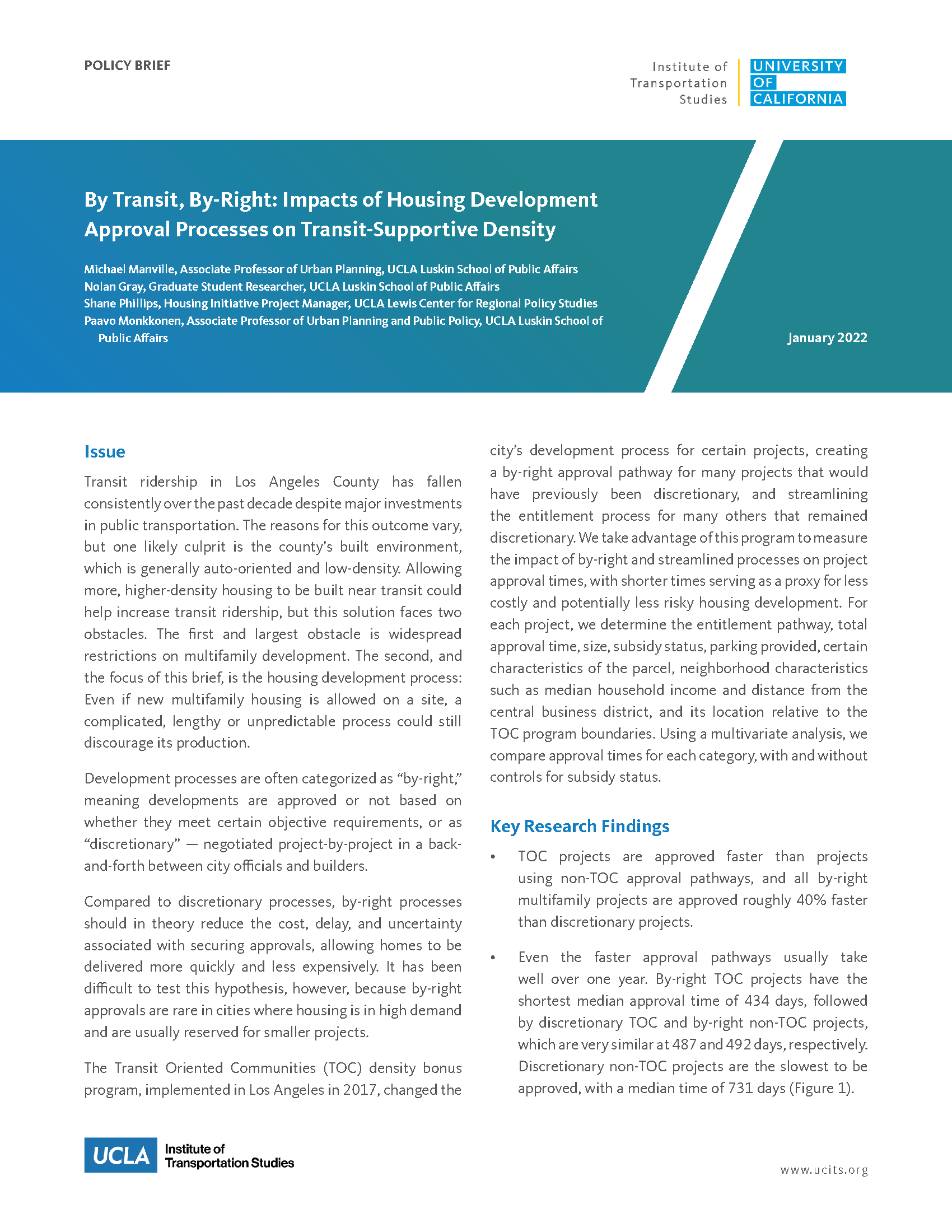Date: January 7, 2022
Author(s): Michael Manville, Nolan Gray, Shane Phillips, Paavo Monkkonen
Abstract
Transit ridership in Los Angeles County has fallen consistently over the past decade despite major investments in public transportation. The reasons for this outcome vary, but one likely culprit is the county’s built environment, which is generally auto-oriented and low-density. Allowing more, higher-density housing to be built near transit could help increase transit ridership, but this solution faces two obstacles. The first and largest obstacle is widespread restrictions on multifamily development. The second, and the focus of this brief, is the housing development process: Even if new multifamily housing is allowed on a site, a complicated, lengthy or unpredictable process could still discourage its production.
About the Project
Los Angeles County has spent tens of billions of dollars to build over 100 miles of rail transit, but today per capita transit ridership is 40 percent lower than before rail construction began. One reason for this startling failure is that LA remains overwhelmingly laid out for the automobile: it is a low-density, parking-heavy landscape where the built environment is not conducive to transit use. Our analysis will compare costs, project timelines, and community benefits of by-right and nearby discretionary projects. We will estimate reductions in project costs and time to market resulting from by-right approvals and compare benefits by assessing differences in affordable units provided by developers. This analysis will be used to project impacts to housing affordability and availability near transit, with estimated mobility impacts that could result, including changes to transit usage and vehicle-miles traveled.


